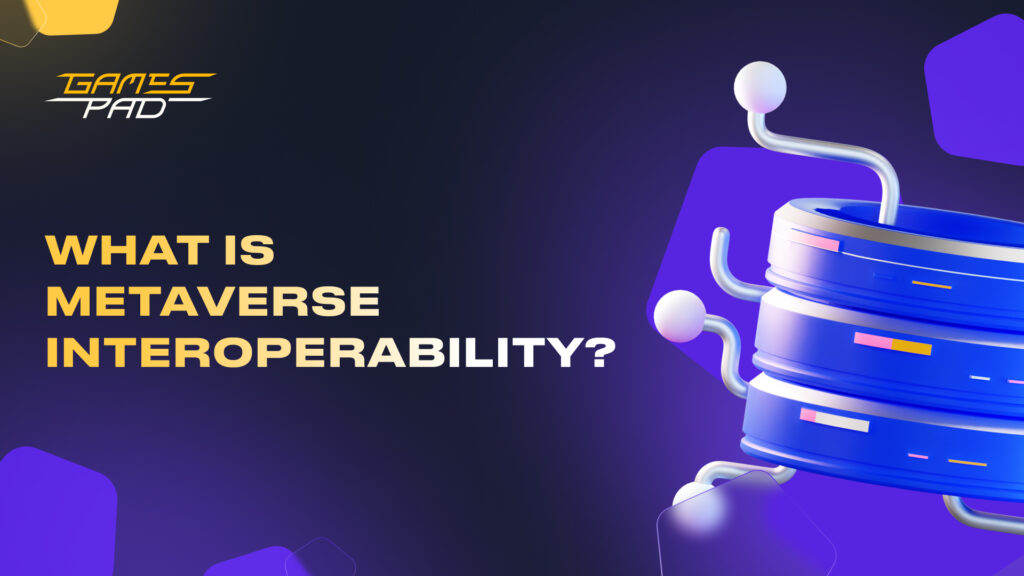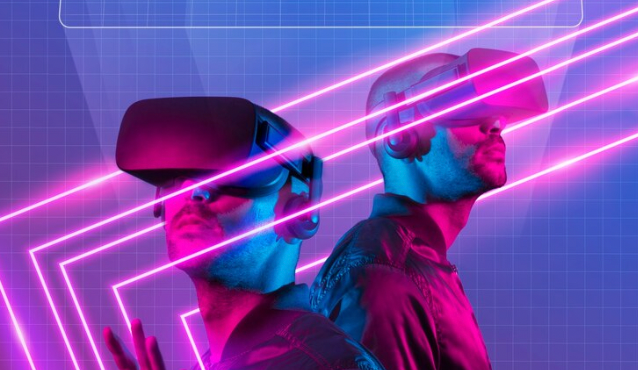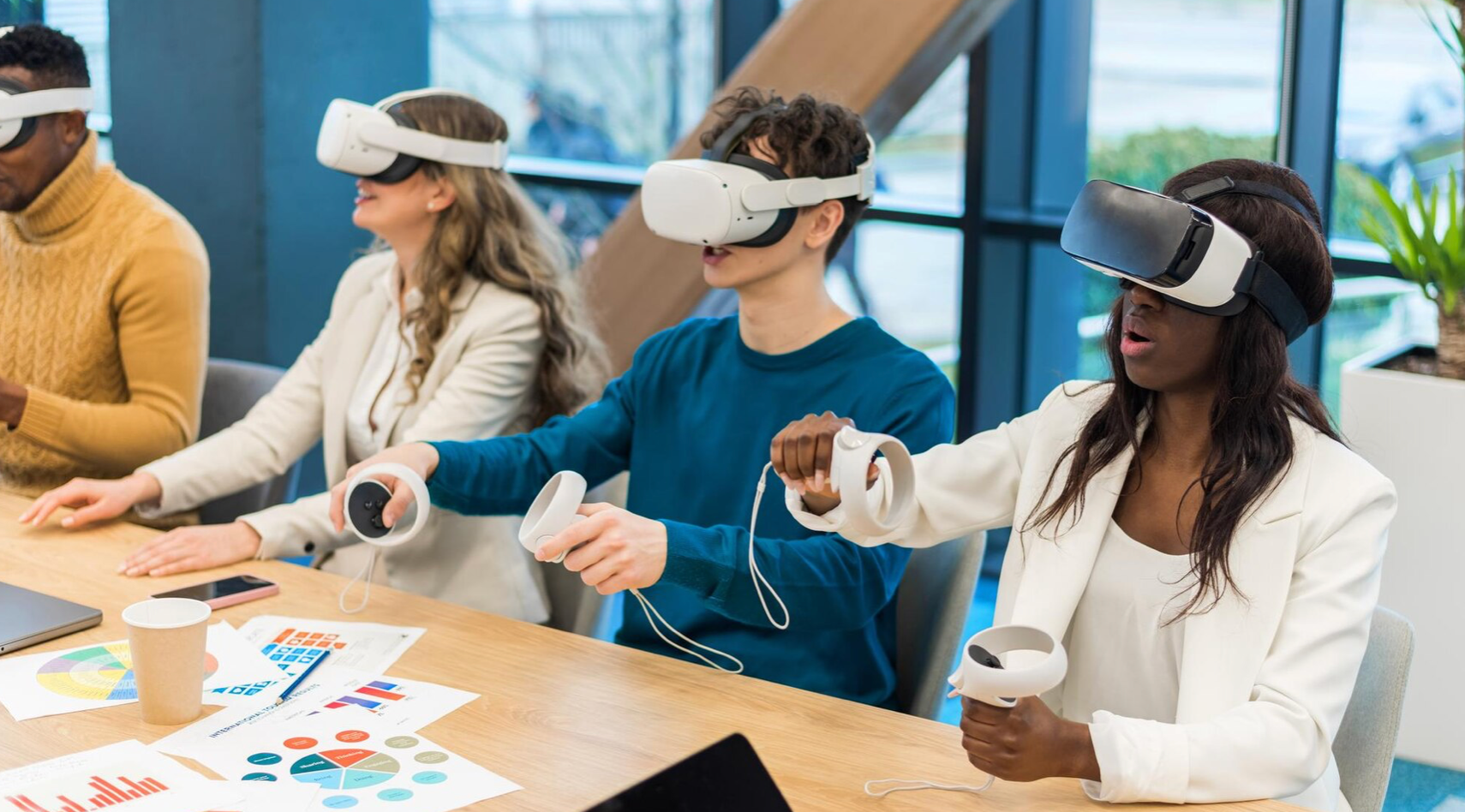
As we stand on the precipice of a new digital revolution, the term “Metaverse” is increasingly becoming part of our lexicon. Envisioned as a collective virtual shared space, created by the convergence of physically virtually enhanced reality and physically persistent virtual spaces, the Metaverse is set to transform how we interact, work, learn, and play. However, to fully realize this potential, there’s an essential ingredient that must not be overlooked: interoperability.
Interoperability, in the context of the Metaverse, refers to the capability of different platforms, systems, and experiences within the Metaverse to work together seamlessly. It’s about ensuring that the digital assets, identities, and experiences in one part of the Metaverse can be used, recognized, and interacted with in another.
This article posits that interoperability is not just a nice-to-have feature for the Metaverse, but rather a prerequisite for its full potential realization. We will explore why interoperability is so crucial, how it can shape the development of the Metaverse, and what challenges lie ahead in achieving it. The journey towards a truly interconnected Metaverse is complex, yet holds promise for a future where digital interactions are as fluid and versatile as those in the physical world. So, what is Metaverse interoperability?

In the context of the Metaverse, interoperability can be defined as the ability of different virtual spaces, systems, and platforms to interact with one another in a seamless manner. This includes the exchange and recognition of digital assets, user identities, and experiences across various Metaverse environments. In simpler terms, interoperability allows your digital avatar from one game or virtual world to visit and interact in another, carrying all your digital assets and achievements along.
To understand the significance of interoperability, it’s helpful to look at how it has evolved in digital spaces. In the early days of the internet, websites and online services were isolated silos. Each website had its own user accounts, data storage, and features. Over time, however, standards and protocols were developed that allowed different sites and services to interact. Social media integrations, single sign-ons, and data APIs are all examples of this type of interoperability.
The evolution of interoperability in the Metaverse is likely to follow a similar pattern but on a much larger and more complex scale. Instead of just websites and online services, we’re talking about entire virtual worlds and realities. The goal is to create a unified Metaverse experience, where users can move freely between different virtual spaces, retaining their identity, assets, and achievements.
Interoperability is key to creating this unified experience. Without it, the Metaverse would be a fragmented collection of isolated virtual worlds. With interoperability, however, the Metaverse has the potential to become a truly integrated digital universe, offering limitless opportunities for interaction, exploration, and creation.
Interoperability within the Metaverse holds immense significance, with far-reaching implications for user experience, economics, and social interaction.
From a user experience perspective, interoperability enhances the seamless transition between different virtual environments. Imagine being able to carry your digital identity, complete with your unique avatar, accomplishments, and digital assets from one virtual world to another without any friction or loss. This continuity across platforms would greatly enhance immersion and user engagement, making experiences in the Metaverse feel more real and cohesive.
Economically, interoperability plays a crucial role in creating a unified virtual economy. In a truly interoperable Metaverse, digital assets such as virtual real estate, in-game items, or cryptocurrencies could be used, traded, and valued across different virtual environments. This could give rise to a robust digital economy where assets and resources flow freely across platform boundaries, fostering innovation and driving economic growth.
From a social perspective, interoperability can foster community and collaboration across different platforms. By allowing users from different virtual worlds to interact with each other, interoperability breaks down barriers and creates opportunities for new forms of social interaction and collaboration. Whether it’s playing games with friends, attending virtual concerts, or collaborating on virtual projects, interoperability allows for a richer, more diverse range of social experiences in the Metaverse.
Overall, interoperability is more than just a technical requirement for the Metaverse; it’s a catalyst for creating a more immersive, economically vibrant, and socially inclusive digital universe.

Achieving interoperability in the Metaverse presents a myriad of technical challenges. One of the most significant is the diversity of platforms, each with its own unique technologies, standards, and protocols. This diversity can make it difficult to create a seamless experience across different virtual environments.
Another challenge lies in ensuring security and privacy amidst this interoperability. As users traverse different platforms, maintaining the integrity and confidentiality of their digital identities and assets becomes crucial.
Despite these challenges, several technologies are paving the way for interoperability in the Metaverse. Blockchain technology, for instance, is playing a significant role. By providing a decentralized and transparent platform for registering and transferring digital assets, blockchain enables these assets to be recognized and valued across different virtual environments.
APIs (Application Programming Interfaces) are another key technology. APIs allow different software applications to communicate and share data with each other, facilitating interoperability between different systems and platforms within the Metaverse.
Additionally, the role of standards and protocols cannot be understated. Just as the internet relies on protocols like HTTP and FTP for interoperability, the Metaverse will need its own set of standards and protocols to enable different virtual environments to communicate and interact seamlessly. These could include standards for digital identity, asset representation, and cross-platform interaction.
Overall, while the path to achieving interoperability in the Metaverse is fraught with technical hurdles, advancements in technology, coupled with the development of universal standards and protocols, are steadily making this vision a reality.

Achieving interoperability in the Metaverse is not without its challenges and limitations. These can be broadly categorized into technical, business, and legal/ethical aspects.
Compatibility issues are a significant technical hurdle. With many different platforms, each using unique technologies, standards, and protocols, ensuring that these disparate systems can communicate and interact seamlessly is a complex task.
Scalability is another concern. As the Metaverse continues to grow and evolve, systems and technologies will need to scale to support increasing numbers of users, assets, and virtual environments. This requires robust infrastructure and efficient resource management.
Security also poses a challenge. Ensuring the integrity and confidentiality of user data and digital assets across different platforms is critical, especially in a decentralized environment like the Metaverse where malicious activities can be hard to control.
From a business perspective, competition among Metaverse platforms and proprietary interests can hinder interoperability. Platforms may be reluctant to share data or enable cross-platform interactions that could potentially benefit their competitors. Similarly, companies with proprietary technologies or exclusive content may resist efforts to standardize or open up their platforms.
Legal and ethical considerations also come into play. Protecting user privacy and data in the Metaverse is paramount, especially when data is being shared across multiple platforms. There are also questions around governance— who defines the rules and standards for interoperability, and how are they enforced?

The concept of interoperability, while relatively new to the Metaverse, has been explored and implemented in various fields, providing valuable lessons for its application in virtual platforms.
Several existing virtual platforms have already begun implementing aspects of interoperability. For instance, according to a study from Springer, the INTER-IoT approach is working towards multi-layer interoperability among heterogeneous IoT platforms. This approach demonstrates how different layers of interoperability can be achieved, from real/virtual layer interoperability to cross-platform implementation.
Another interesting case is the alignment of the product lifecycle management federated interoperability framework with the Internet of Things and virtual manufacturing. This approach highlights the implementation of standards and their impact on an experimental test bed platform, simulating a real manufacturing environment.
Looking beyond virtual platforms, other industries also offer valuable insights into achieving interoperability. In the world of cloud computing, for example, research from ACM has investigated existing taxonomies, standards, and implementations of cloud interoperability. The exploration of Virtual Appliance issues in the cloud interoperability taxonomy provides key learnings that could be applied to the Metaverse.
The gaming industry has made strides in this area as well. Many modern games now support cross-play, allowing players on different platforms to play together. This level of interoperability enhances the user experience and expands the potential player base, offering a model for similar implementations in the Metaverse.

As we look towards the future, interoperability in the Metaverse is expected to play a pivotal role in how we interact, work, and play in virtual worlds. This section will explore predictions and trends, potential breakthroughs, and the role of the community in shaping interoperability.
Experts and industry forecasts suggest that the Metaverse will become an immersive, interoperable, and synchronous digital world. The concept of interoperability is evolving beyond just enabling seamless interaction among different virtual worlds. It’s also about connecting, coordinating, and enriching these worlds, making the Metaverse a more realistic concept with diverse use cases.
The enterprise sector is also expected to embrace interoperability in the Metaverse, aiming to increase efficiencies, reduce costs, and improve product quality. In essence, the future of interoperability lies in removing friction for users and ensuring their freedom of movement across diverse virtual worlds with a persistent digital identity.
While it’s difficult to predict the specific technological breakthroughs that will shape the future of interoperability, some broad trends are emerging. For instance, advancements in blockchain technology could enable more secure and transparent registration and transfer of digital assets across different platforms.
Moreover, innovations in APIs and other integration technologies could make it easier for different systems and platforms to communicate and share data, enhancing the user experience. Also, the development of universal standards and protocols for the Metaverse is on the horizon, which will be crucial for enabling seamless interaction and integration.

Community and user feedback will play a critical role in shaping interoperability in the Metaverse. As users traverse different platforms, their experiences and feedback will inform the development of more user-friendly and efficient interoperability solutions.
Moreover, as the Metaverse becomes more sociable and interconnected, users’ expectations and demands for seamless experiences will drive innovation and improvements in interoperability8. The ability to unify economies, avatars, and systems in an interoperable Metaverse will likely be a significant focus of future development efforts.
With that in mind, we can conclude that while there are many challenges to overcome, the future of interoperability in the Metaverse looks promising. Through expert predictions, potential innovations, and community engagement, we can anticipate a Metaverse where seamless interaction across diverse virtual worlds becomes the norm.

The concept of interoperability in the Metaverse, or what we might call an “interoperable Metaverse,” represents an exciting frontier in the evolution of virtual environments. As we’ve explored in this article, understanding an interoperable Metaverse is not just about enabling seamless interaction between different virtual worlds. It’s also about enriching these digital worlds and creating a more immersive, continuous, and inclusive user experience.
From technical challenges like compatibility, scalability, and security to business hurdles such as competition and proprietary interests, there are numerous obstacles to achieving full interoperability. However, real-world examples and lessons from other industries provide valuable insights into potential solutions and strategies for the Metaverse project (or one of the most reputable interoperable Metaverse projects).
Looking to the future (of virtual reality and Metaverse projects as well), industry forecasts suggest a promising role for interoperability in shaping the interoperable Metaverse. Potential innovations, particularly in blockchain technology and integration technologies, could enhance security and user experience in this virtual space. Moreover, the active participation of the community and users will be crucial in driving improvements and shaping the development of interoperability solutions.

Augmented reality, virtual assets, and the ability to traverse multiple virtual worlds are just a few of the elements that will define the interoperable Metaverse. Groups like the open metaverse interoperability group are already working towards making this a reality.
In conclusion, while we are still at the early stages of this journey, the future of interoperability in the Metaverse holds immense potential. Understanding that interoperability is critical to the success of interconnected virtual worlds helps us realize the importance of this concept.
The interoperable Metaverse is a collective endeavor that calls for the concerted efforts of all stakeholders—industry players, developers, and users alike. By working together, we can overcome the challenges and unlock the full potential of the Metaverse, creating a truly interconnected and immersive virtual universe. The future of digital interaction lies within the interoperable Metaverse, and it’s an exciting prospect we should all strive to realize. We hope we gave the answer to the question: “What is Metaverse interoperability?”.
Would you like to start investing in the most impactful crypto gaming, NFT and metaverse projects with GamesPad? Learn how in this comprehensive tutorial!
Disclaimer. This material should not be construed as a basis for making investment decisions or as a recommendation to participate in investment transactions. Trading digital assets may involve significant risks and can result in the loss of invested capital. Therefore, you must ensure that you fully understand the risk involved, consider your level of experience, investment objectives, and seek independent financial advice if necessary.